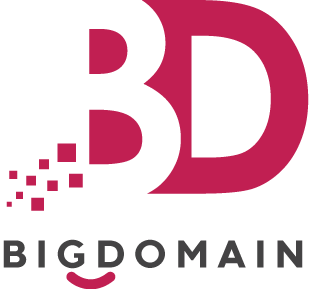Maintaining your online presence fresh and engaging requires a website redesign. But done carelessly, it may cause traffic to drop and hurt your SEO efforts including SEO ranking. This thorough website redesign SEO manual will go over the best ways to make sure your website redesign improves user experience without sacrificing search engine optimization with seo tools.
Understanding the Impact of Website Redesign on SEO
A carefully done website redesign may raise visitors and enhance your SEO ranking performance. But one has to be mindful of the possible traps that can cause organic traffic to decrease. Let’s explore some typical causes of organic traffic loss following a website redesign and how to successfully deal with them.
Reasons for Traffic Drop After a Website Redesign
1. Website Domain Change
Search engines may remove the prior website from their crawling even with a small domain change, such as taking out “www.” or migrating from HTTP to HTTPS.
It is therefore advised against changing the domain name at any costs. Even if all goes according to plan, Google might not have any history with the new domain name, so essentially starting over…in a negative way though.
2. Site Architecture Change
Search engines can classify and index your content differently if you change the URL or structure of your website. To make sure the content structure is hierarchical and easy navigation for both user and search engine navigation, it requires effective site architecture.
3. Content Changes
Modifications to your website’s content, including the removal of high-ranking pages or changes to existing content, can impact organic traffic and keyword rankings. It frequently happens when discovering opportunities to optimize for better content marketing strategies and SEO ranking performance.
4. On-Page Optimization Changes
Rankings might drop when on-page optimization elements like heading structure, meta tags, and keyword targeting are overlooked throughout the redesign process.
5. Technical Issues
Technical issues, mobile responsiveness, and poor website speed can all have a big effect on SEO ranking after a website redesign.
Strategies to Maintain SEO Ranking for Website Redesign
Pre-Redesign Preparation
- Identify Pages with Organic Traffic
Assign pages generating organic traffic priority, and make sure their URLs and content are kept both before and throughout the redesign. There are four metrics you can use to identify them – number of backlinks, internal links, organic traffic and the page ranking.
– Find and catalog backlinked pages
Get a full list of URLs together with the number of backlinks they have from your preferred SEO tools first. Your top backlinked pages can be exported from Semrush using the Backlink Analytics tool.
Setting up Google Search Console ahead of time since it’s always a good idea to get the same data from a separate tool because your SEO tools have a limited dataset. With the same data type available from Google Search Console, we have more information to examine.
Cross-reference your information now to find any extra pages that either tool missed or to eliminate any duplicates in the Excel file.
– Internal link value
Having determined which pages are getting the most links from outside sources, think about cataloging the pages on your website that have the greatest number of internal links from other pages on your website.
Increased internal link counts also imply greater equity, which helps pages rank. Inlinks or URL Details reports can contain this information from a Screaming Frog Crawl.
Think about the internal links you intend to use. Google mostly crawls through your website through internal links, which also transfer link equity from page to page.
– Catalog top organic traffic contributors
Seeing how many sessions started on a certain page is made easy with Google Analytics 4’s Landing Pages report. Reports > Engagement > Landing Page is how to get to this.
Whether visitors arrive at your website naturally or via another source, these pages are what drive them there.
Depending on how many monthly visitors your website receives, think about extending your date range to have a bigger dataset to look at.
Reviewing all landing page data from the last 12 months and excluding any new pages added as part of a continuing website redesign SEO plan is advised. Anyway, these ought to be transferred to your new website.
To view only Organic sessions from search engines, feel free to apply a Session Source filter for Organic Search.
– Catalog pages with top rankings
This step is conducted to have the whole view of what pages are valuable for SEO.
Easily compile a spreadsheet of your web pages with keyword ranks in the top 20 Google results pages with Semrush. As they often need less work to enhance than keyword rankings in a lower position, consider rankings in position 20 or better to be quite useful.
Go to Pages in the Organic Research tool. Exporting a list of your URLs with top 20 keyword rankings.
Together with your top organic traffic sources and backlinks, this information gives you a comprehensive list of URLs that satisfy one or more requirements to be regarded as SEO assets.
Then, rank URLs from those that satisfy all three criteria highest, following those that satisfy two, and lastly, those that satisfy only one. You can vary the degree of stringency for which pages you actually view as SEO assets by modifying the thresholds for keyword rank position, minimum monthly traffic, and number of backlinks.
- Review Previous 301 Redirects
Check that current 301 redirects are implemented correctly to preserve link equity and page authority.
Distribution of link juice correctly requires importing both current and past redirects and making sure there are no redirect chains or loops.
Though it takes a lot longer and could result in a bounce, a redirect chain may eventually send the user where they want to go while a redirect loop prevents them from escaping.
It is crucial to keep the current URL structure as much as possible and attempt to reduce 301 redirects. Not every 301 redirect will transfer all of its authority to another page.
- Eliminate 404 Pages
By using more of the crawl budget on non-existent pages than on actual pages and by aggravating users, these mistakes can damage your brand and affect your SEO. All things considered, these pages give the wrong impression of your website.
If you’ve relocated or relaunched your domain without correctly redirecting all of your URLs to the new site, or if you’ve deleted or removed pages from your site without doing so, 404 errors can result.
404 problems and broken links can be rapidly found with a site audit utilizing tools like Screaming Frog.
During Redesign Implementation
- Implement New 301 URL Redirects
Create a thorough strategy for new 301 url redirects, giving pages with strong backlink authority priority and guaranteeing minimal redirect links.
Redirect lists can be imported into most SEO tools and CMS platforms as CSV files, but you have to enter them one at a time.
Screaming Frog can help you crawl and catalog all of the URLs on your website if you need to modify any. This will let you map each old URL to any receiving updates separately.
Though it is a very laborious part of SEO asset retention, this is the only way to ensure that Google will make the connections between the old and the new.
- Extract Meta Information
Preserve previously optimized heading tags, descriptions, and meta titles to preserve consistency and keyword relevance.
Metadata on websites frequently changes inadvertently along with content changes. Title tags, meta descriptions, and alt text all affect how well Google interprets the content on your website.
In this case, pages are either “untargeted or retargeted.” Keyword relevance shifts and rankings fluctuate when fresh word choices in the headers, body or metadata of the new website unintentionally eliminate on-page SEO components.
- Check for Unintentional Google’s Crawlers Blocking Issue
Web designers now often build, test, and design your new website in a “live environment” by setting up a staging environment.
Through a forbidden protocol in the robots.txt file, you can prevent Googlebot from crawling and indexing the testing environment. A no index meta tag, on the other hand, tells Googlebot not to index the page’s content.
Websites are launched all the time without eliminating these protocols, as ridiculous as it sounds. Then webmasters wonder why Google’s results show their website gone right away.
Before your new website goes live, you really should check this. Should Google crawl these procedures, your website will be excluded from organic search results.
Post-Website Redesign SEO Optimization
- Detecting Crawling Errors: Find and fix crawling and indexing problems, such as 404 errors and blocked pages, with the help of Google Search Console and website crawlers.
- Optimize Mobile Friendliness: To enhance user experience and SEO performance, make sure your new website is responsive and mobile-friendly.
- Examine On-Page Enhancement: Examine every element on the page, including headings, internal links, and meta tags, in detail to find and close any optimization gaps.
Dive deep in on-page SEO optimization: SEO Techniques: On-Page Optimization | BigDomain.my Malaysia Domain | SEO
Final Thoughts and Recommendations
Retaining SEO ranking during a website redesign calls for careful preparation, carrying out, and post-implementation review. By implementing the techniques in this article and being alert to possible problems, you can make sure that your website redesign improves user experience and search engine optimisation.
If you would like any further help or advice on how to optimize your website redesign SEO strategies, feel free to contact our team of SEO experts Malaysia at BigDomain – the best SEO company in Kuala Lumpur and Penang that provide the comprehensive local seo services for your brand strategy.
Our job is to assist you get the most of your organic traffic potential, negotiate the challenges of website redesign and preserve your SEO ranking with our google seo services. If you are targeting local seo, claim the free SEO EBook 2024/2025 now!
Keen to explore further details?
For more information on Xiaohongshu marketing services we provided, feel free to check out at:
Or, you can easily reach out to our team for further assistance via WhatsApp using the following link:
https://wapp.my/60187880118/ (Sue)
https://wapp.my/60184715660/ (Hooi Min)





